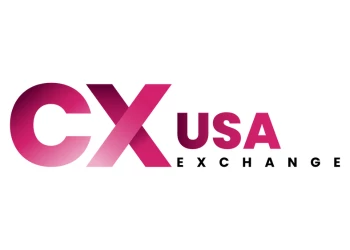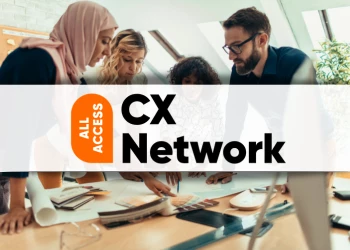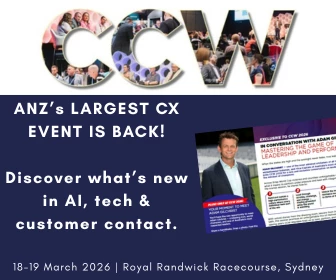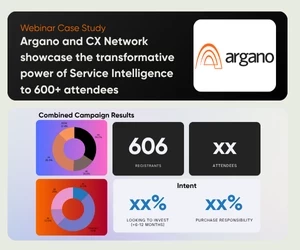How to save CX according to Jim Tincher
According to Jim Tincher, CX is disconnected, and in future, this could drastically change where it sits in the organization. Speaking to CX Network he explains how practitioners can reframe CX, embrace NRR and avoid irrelevance
Add bookmark
Anecdotally, like many in CX founder, CEO and journey mapper-in-chief, Jim Tincher CCXP, sees “more and more CX programs being eliminated”.
“Last week, through a friend, I heard about a major retailer eliminating the whole experience team. It's happening all over the place and the big reason is because everybody is focused on growth, but CX can’t show how it is contributing to that growth,” Tincher says.
There are three reasons for the current situation:
- Executives communicate in data;
- Those in CX struggle to use financial and operational data in their work;
- And by and large, CEOs are more focused on finance and operations than customer-related outcomes.
Taken together, these factors indicate big changes ahead for CX as a profession and business function.
At the time of interview, Tincher was leading a major research project for CXPA, for which he was interviewing CEOs on the business outcomes they’re aiming to drive for their organizations. “There's no mention of CX,” Tincher says. “So, then I ask them further questions and it's all about growth, or profitability for the CFO. When I ask them what their leading indicators are, sometimes they mention customer experiences, but never CX data. Sometimes they see NPS as its own outcome, but they see no link between NPS and the growth they’re targeting.”
Tincher’s research for CXPA isn’t the first to identify this trend. In 2023, Gartner asked CEOs what matters to them most and growth emerged as the top business priority, cited by 49 percent of C-suite respondents. A mere eight percent mentioned customer-related factors.

Don't miss any news, updates or insider tips from CX Network by getting them delivered to your inbox. Sign up to our newsletter and join our community of experts.
“The question is, how do you grow without customers? You don't. But while CX is talking about customer outcomes like NPS, CEOs want to hear about growth,” Tincher says. “My definition of a silo is when you have your own data and your own definition of success that doesn't match the rest of the business. That there is a silo and that is what most of us are doing in CX right now.”
The solution for the disconnect is to reconnect the two sides of this conversation.
According to Tincher the “ultimate CX metric” through which to achieve the required reconnection is net revenue retention (NRR).
“Essentially, it's a combination of retention and changes in growth. Let's say it's the end of the year, you're doing your analysis and you look exclusively at the customers you had at the end of 2023, no new customers. How much did they spend in 2023 versus how much did they spend in 2024? If you lost 10 percent of your customers, but you grew the remaining by 11 percent, you would stay flat. Net revenue retention combines that retention, because you're bringing new customers, with changes in spending.”
NRR is explained in detail in Tincher’s book, Do B2B Better, and it’s also a cornerstone of the strategy at his consultancy, Heart of the Customer, meaning it has been applied hundreds of times in real-world B2B CX scenarios.
The businesses that see NRR as the outcome are consequently focused on the customer emotions that lead to that outcome, and then the operations that create the sentiment that creates the NRR. “First of all, this means measuring something different, not NPS, but something that actually matters to customers, such as how they feel about the company, informed by those operations. Then looking at the data to say, ‘OK, where are we creating those emotions?’”
Linking CX and operations
As outlined, operations plays a key role in realizing the CEO’s growth targets. In fact, in Tincher’s own words, CX is simply great operations. Nowhere is this more evident than in the customer journey a topic which, as an authority on journey mapping, Tincher has built his career on.
A seamless and fruitful journey spans multiple touch-points and sees a customer complete a task or purchase without undue effort.
In August, CX Network conducted a small-scale research project into customer journey design and experience for the report, The State of Journey Experience 2024-2025. When network members were asked if they could benchmark journey-related KPIs with those of their competitors, more than 90 percent said no. Tincher says: “The disadvantage this creates for that 90 percent is irrelevance. If you can't connect to operational measures, you're irrelevant!”

The research also asked network members how their organization’s approach to customer journey measurement and understanding has changed over the past year, and some strong trends emerged. More than 40 percent said they have enhanced their use of data analytics and AI tools, while 28 percent said they had increased investment in dedicated customer journey technologies.
Achieving and explaining the 3 outcomes of great CX
Despite the appetite for some to invest in specific customer journey technology, Tincher says the future of CX is less about off the shelf tools and more about data – the love language of business, as BNY’s Bill Staikos said in Do B2B Better. Crucially, such data need to demonstrate a connection between cause and effect; in this case, business operation and customer emotion.
The first step in modern journey management is to identify the target outcome. “We're not trying to create happy customers,” he says. “There are three outcomes of the work we do: customers need to buy more, stay longer and interact in ways that are less expensive to serve. Those are the only outcomes that matter. You can't just say ‘we sold more and it’s all down to CX, give us a big raise’, because sales will eat your lunch,” he says.
Communicating these three outcomes in a way that resonates with leaders – and operations – is the next challenge. But it’s not impossible: in fact, it’s simply the first step in how practitioners need to change how they communicate any CX outcome.
“If the outcome of an improved customer experience was stronger sales, was that through increased order velocity? Improved margin because they like us better, so they keep buying from us? Or was it through improving cross-sell and up-sell? You must be more specific than just revenue. My most hated report, which I see all the time, is, ‘last year, promoters churned at three percent, detractors churned at 10 percent’. That doesn’t drive action in the business.”
This may be what the CX leader of today is reporting on, but as outlined in the opener, CX now faces a rather enormous survival crisis, in large part due to a lack of relevance and disconnection with what matters to the CEO and therefore, the wider business.
“Instead, the CX leader of the future starts with ‘our NRR is 105 percent. What that means is that we had churn of 10 percent, but we were able to grow our existing 90 percent to such a point that we actually grew as a business’.”
Introducing customer emotion to the equation
The next job is to link in that aforementioned customer emotion and for this example, Tincher focuses on confidence versus frustration.
Explaining the point with ballpark figures, Tincher says: “We can look at what drove that growth, and we can see among customers who are confident in us as a supplier, their net revenue retention is 130 percent compared to customers who are frustrated with us, where it's 65 percent. When we look at what drives confidence versus frustration, we can see that when on-time delivery is above 87 percent confidence is maintained. We don't have to be perfect, we just have to be consistently good. But when it drops below 87 percent, as an average, we start to lose confidence.
“If it gets down to 80 percent, that's when frustration kicks in, and the key indicator of frustration is the number of complaints,” he continues.
The principles can apply to any industry or business and using this framework, Tincher says it’s possible to predict how emotions will develop. “The practitioner could then conclude that there are existing supply problems in the North East and confidence is starting to drop as a result, with frustration kicking in. Therefore, you can predict that NRR is going to be less than 100 percent in the North East region next year. That conversation is what the business needs to hear,” he says.
It is then possible for a forward-thinking CX leader to create a journey map with overlayed NRR and customer emotion insights, to demonstrate how different outcomes impact the organization in different ways. While Tincher reports that some companies and practitioners are already there, their numbers are small.
Overcoming the fear of data
Executing this requires CX leaders to overcome their fear of data.
In 2021, a study by IBM asked CEOs who they trust the most in their organizations and the top responses were the chief financial officer (CFO) and the chief operating officer (COO). When Heart of the Customer asked CX leaders how often they talk to finance, the two most selected responses were “once a year” and “never”. It’s another disconnect that threatens the future of CX in the modern organization.
“If you can't speak to finance and get them working with you, you have zero chance of influencing the C-suite,” says Tincher. “It's all about data, but people are afraid of asking for data, and they're afraid of finance.”
Tincher isn’t the first to highlight that CX leaders need stronger data literacy skills and confidence with financials and numeracy, and it’s unlikely he will be the last. However, his overall message is crystal clear: the CEO cares mostly about finance and operations and the inability of practitioners to link financial and operational data in their work is making CX irrelevant.
On how all this could shape the future of CX, Tincher’s outlook is somewhat controversial: CX will move into operations or disappear.
“Operations is where CX belongs because great CX is just great operations. CX needs to be helping operations understand which levers to pull in order to grow the business,” Tincher says.
At Heart of the Customer the shift has already begun. When consulting with companies that are building a CX program, the first piece of advice is not to hire from outside, but to take somebody from operations, teach them CX and let them drive the necessary changes.
Tincher says: “We see it over and over again, you bring in somebody from the outside and they can't move the needle. So, don't hire from a competitor, don't hire somebody who's had a CX job once. Either hire somebody from the inside or hire somebody who's been in a lot of different companies.”
Quick links
- The secrets to customer journey mapping success with Jim Tincher
- Turning products into experiences and bringing brands to life
- Solving the problems facing consumer insights
Special Report: The Global State of CX
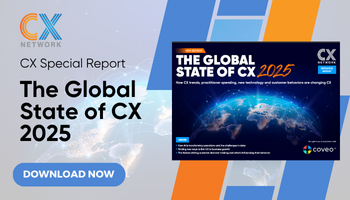
Tenth annual flagship report. AI has transformed CX, raising expectations with investment in AI for CX automation, machine learning, and conversational AI now a top priority. Download the Global State of CX to learn how the industry is preparing for the new AI first future.
Download Now
